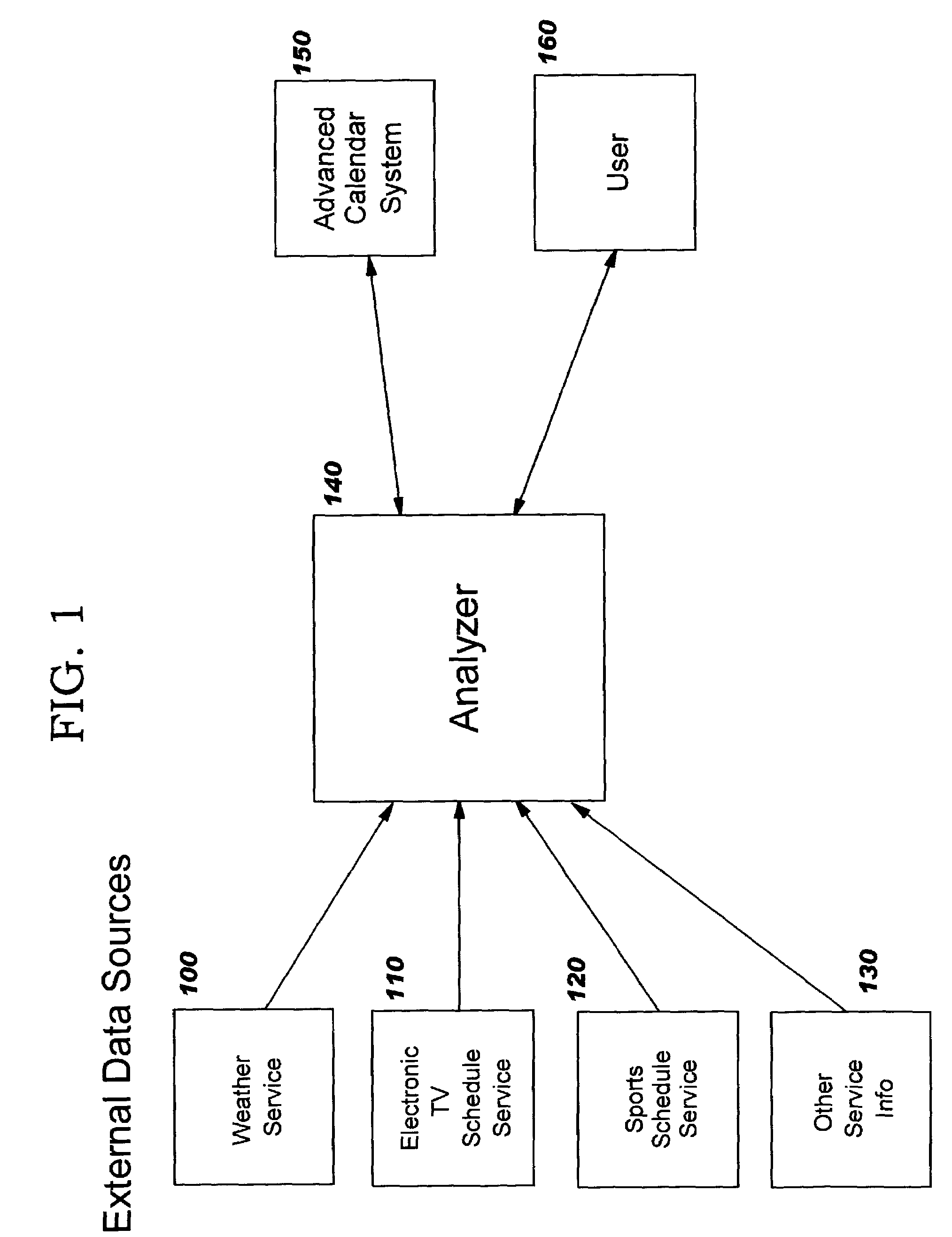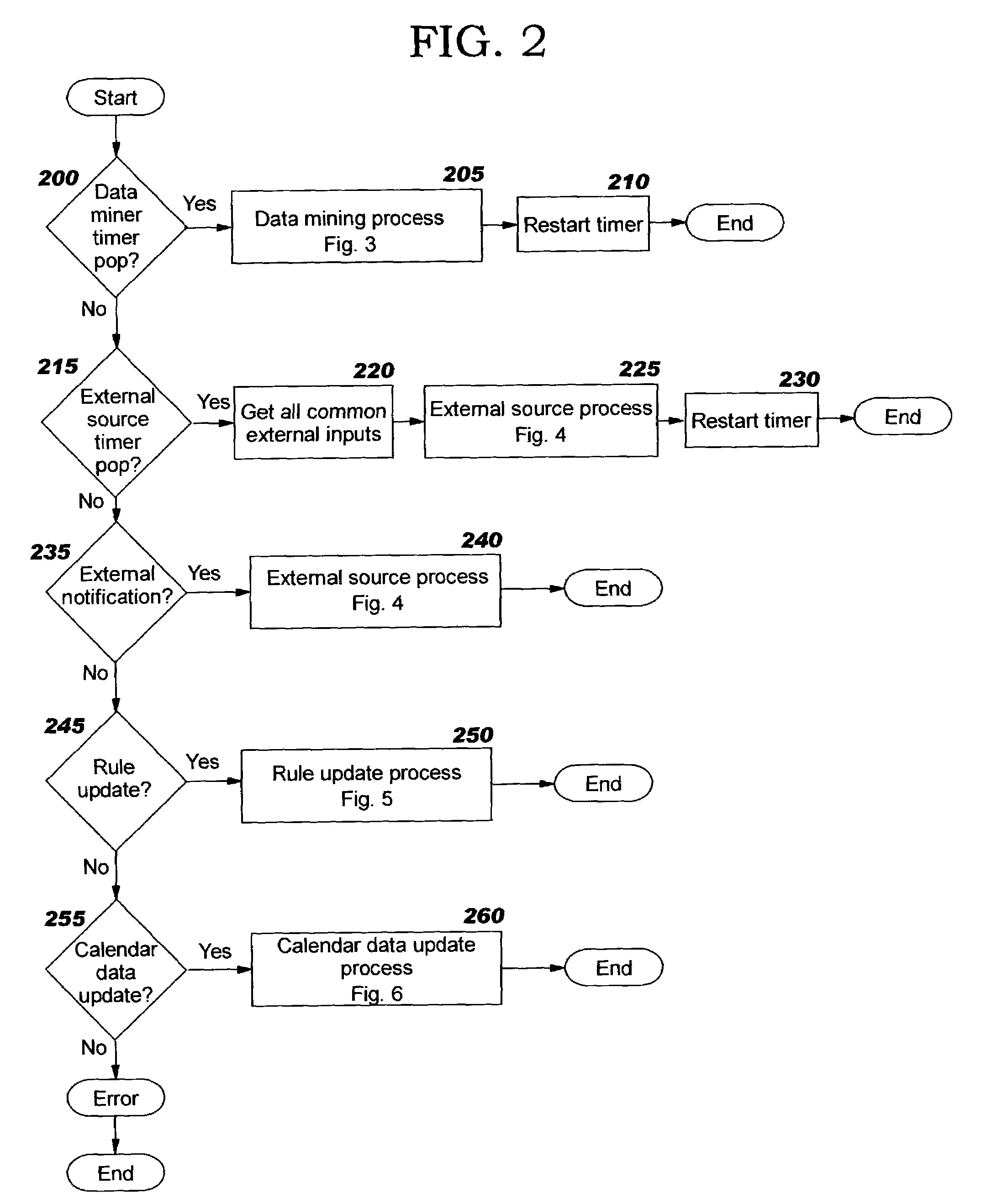Predicting and adjusting users' working hours and electronic calendar events
a technology for predicting and adjusting users' working hours and electronic calendar events, applied in the field of computer systems, can solve problems such as inaccurate information about users' availability, repetitive process, and time-consuming process, and achieve the effect of avoiding errors, avoiding errors, and avoiding errors
- Summary
- Abstract
- Description
- Claims
- Application Information
AI Technical Summary
Benefits of technology
Problems solved by technology
Method used
Image
Examples
example
Updating Working Hours Based on an Event
[0035]Suppose that Janet has defined her working hours as 8 a.m. to 5 p.m. Monday through Friday, but that she receives a meeting notice for a meeting that is scheduled from 5 p.m. to 7 p.m. on Thursday. Since this event is outside of Janet's scheduled working hours, the analyzer disclosed herein determines, based on rules Janet defined, to update Janet's working hours for Thursday to 8 a.m. to 7 p.m. Janet therefore does not have to manually revise her scheduled working hours, and individuals or applications consulting her calendar will be informed that she will be working until 7 p.m. on Thursday, and that she will be in a meeting starting at 5 p.m.
[0036]If the meeting is subsequently re-scheduled or cancelled, then the analyzer disclosed herein automatically updates Janet's working hours for that Thursday to her originally-scheduled 8 a.m. to 5 p.m.
[0037]Rules similar to the following produce the desired results:[0038]If a meeting is schedu...
example scenario 1
Updating Working Hours with User Input
[0067]Suppose that Sally has defined her working hours as 7 a.m. to 5 p.m. Monday through Friday, but that an analysis of her historical calendar data shows that her actual working hours are 7:45 a.m. to 5 p.m. Monday through Thursday, and 7:45 a.m. to 4 p.m. on Fridays. Therefore, individuals or applications consulting Sally's calendar for scheduling future events will believe that Sally is available by 7 a.m. every day, and until 5 p.m. on Friday, even though this is not an accurate reflection of Sally's work habits.
[0068]Using the present invention to solve this problem, the analyzer component will use Sally's historical data to identify this discrepancy, and then based on a defined rule, Sally will be queried about whether she would like to change her “normal” working hours to align with the analyzer's prediction of what her typical working hours should be. Sally's positive response to the query will cause her working hours to be updated, re...
example scenario 2
Automatically Updating Working Hours
[0069]Mike frequently works a flexible schedule. He allows the calendar system, according to the present invention, to automatically adjust his scheduled working hours, based on predictions made by the analyzer as it reviews his historical calendar data (which includes Mike's actual working hours). On Fridays, however, Mike wants to maintain 5 p.m. as his ending work hour, even though he sometimes works later. This way, the automated meeting scheduler used in Mike's company (which uses scheduled working hours to set up meetings) will not schedule Mike to attend any meetings after 5 p.m. on Fridays. Mike creates one or more rules to prevent his Friday ending work hour from extending past his desired cutoff time, thus tailoring the system to meet his needs. A rule similar to the following produces the desired results:[0070]If historical data indicates that working hours should be adjusted, then automatically adjust working hours on any day except fo...
PUM
 Login to View More
Login to View More Abstract
Description
Claims
Application Information
 Login to View More
Login to View More - R&D
- Intellectual Property
- Life Sciences
- Materials
- Tech Scout
- Unparalleled Data Quality
- Higher Quality Content
- 60% Fewer Hallucinations
Browse by: Latest US Patents, China's latest patents, Technical Efficacy Thesaurus, Application Domain, Technology Topic, Popular Technical Reports.
© 2025 PatSnap. All rights reserved.Legal|Privacy policy|Modern Slavery Act Transparency Statement|Sitemap|About US| Contact US: help@patsnap.com



